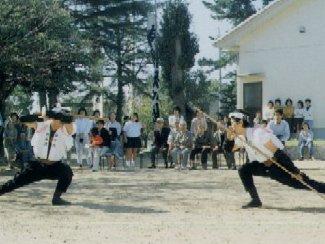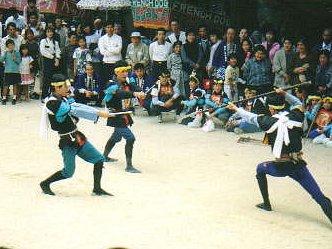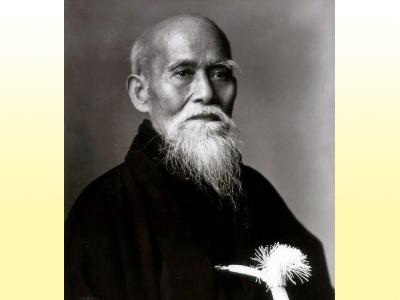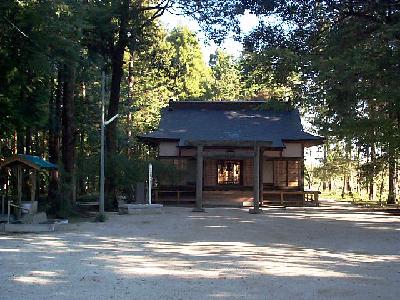|
Bo-no-te (staff techniques) is a folk performing art handed down in several parts of Aichi Prefecture. Bo-no-te in Aichi Prefecture dates back to the Azuchi-Momoyama period (1568-1598), when Niwa Ujitsugu, the castellan of Iwasaki Castle in Owari province (the western half of present Aichi Prefecture), hired Kamata Hironobu as a bujutsu shinan (martial arts instructor).
He was a person of great skill in martial arts and especially excelled in staff techniques. Hironobu distinguished himself in the Battle of Komaki and Nagakute, but he became a Buddhist priest after the battle and traveled around the country to appease the souls of the dead soldiers.
When he returned to his hometown in Owari province, he opened the Bo-no-te school in reply to the local villagers’ earnest petition. Later, Kamata-ryu Bo-no-te (the Kamata school of staff techniques) spread to Mikawa province (the eastern half of present Aichi Prefecture).
When the nation returned to peace, the staff techniques turned into the performing art that was dedicated to gods in hope for a good harvest. The techniques in Bo-no-te have been proudly handed down in many towns in the prefecture.
Kamata-ryu Bo-no-te in Tanuki Town in Nishio City is one of such folk performing art. The men in traditional costumes skillfully wield 1.8 meter long staffs with distinguished calls. It was designated as an Important Intangible Folk Cultural Property by the prefecture in 1959.
He was a person of great skill in martial arts and especially excelled in staff techniques. Hironobu distinguished himself in the Battle of Komaki and Nagakute, but he became a Buddhist priest after the battle and traveled around the country to appease the souls of the dead soldiers.
When he returned to his hometown in Owari province, he opened the Bo-no-te school in reply to the local villagers’ earnest petition. Later, Kamata-ryu Bo-no-te (the Kamata school of staff techniques) spread to Mikawa province (the eastern half of present Aichi Prefecture).
When the nation returned to peace, the staff techniques turned into the performing art that was dedicated to gods in hope for a good harvest. The techniques in Bo-no-te have been proudly handed down in many towns in the prefecture.
Kamata-ryu Bo-no-te in Tanuki Town in Nishio City is one of such folk performing art. The men in traditional costumes skillfully wield 1.8 meter long staffs with distinguished calls. It was designated as an Important Intangible Folk Cultural Property by the prefecture in 1959.
| [+ADDRESS] | 
|















